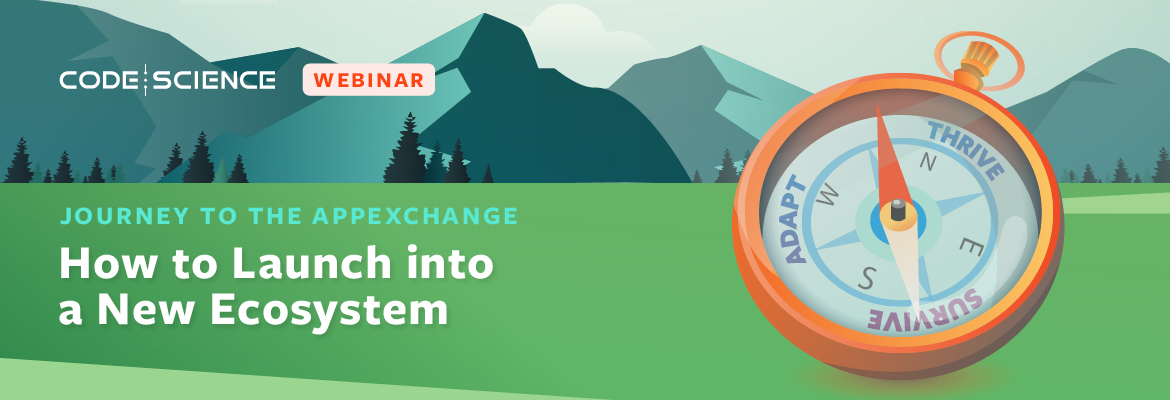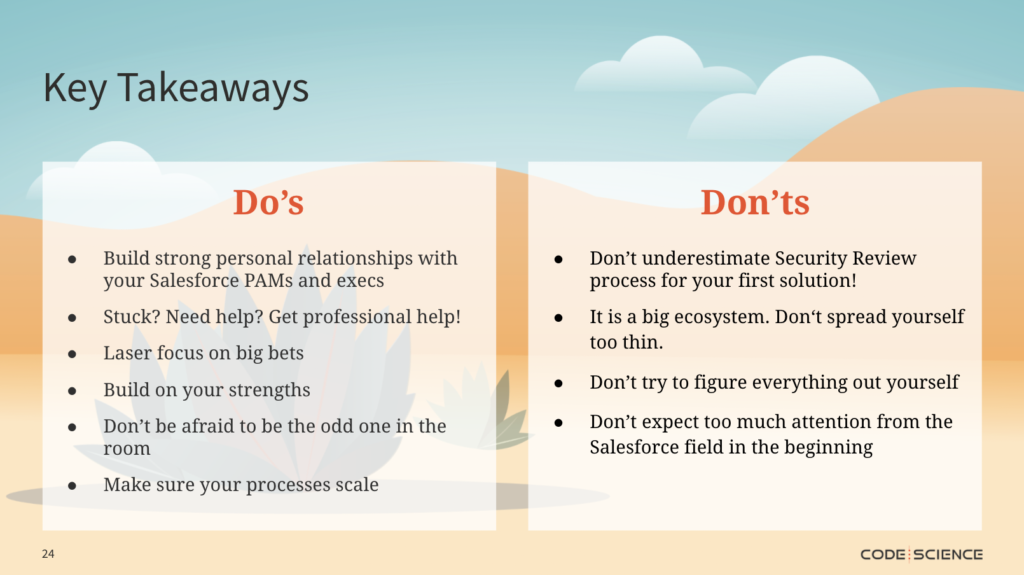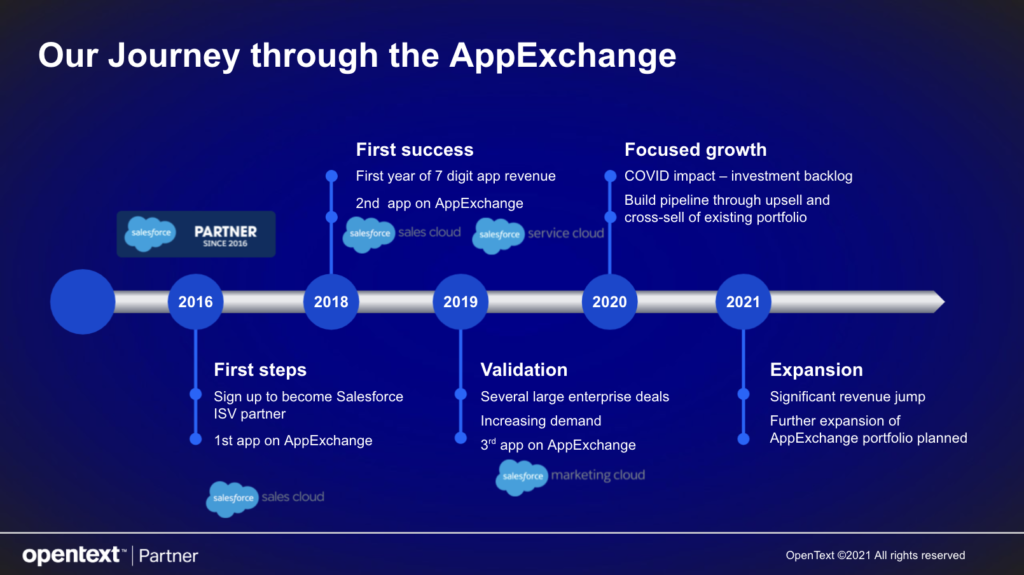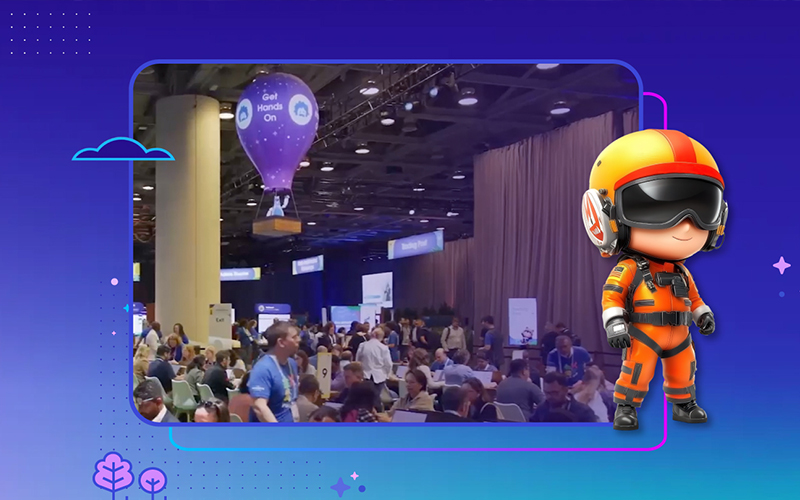
This month, we kicked off a new webinar series called Journey Through the AppExchange. This series features CodeScience Chief Revenue Officer, Sean Hogan, and a variety of ISV leaders discussing their unique paths through the Salesforce AppExchange from idea to launch and beyond.
In this first installment, Sean spoke with two OpenText leaders: Bernd Hennicke, Senior Director of Ecosystems Strategy, and Wolfgang Schmidhuber-Tindle, Director of Ecosystem Strategy. Together, they dive into what it takes to be successful in the Salesforce ecosystem, as well as how its global ecosystem can help expand an ISV’s reach.
As Sean says, “A lot of times ISVs that are just starting out in the ecosystem don’t want a manual. They want to hear from true experts, their particular journey, and how they figured out how to crack their code to commercial success. That is our goal in this series – to combine experts with know-how and knowledge, and provide resources to help you through that journey.”
Incorporating Expert Advice Early in the Process
Typically, your experience with Salesforce and the AppExchange will start with strategy, product, and building. Early on in this process is when you will want to focus on product marketing and think about creating your buyer’s and seller’s journey, in addition to a deployment and support strategy. As you start to learn more about the process, you might start to worry about how much time this launch will take and if your team has the necessary skills and experience to complete all of the necessary steps. Is this a journey you can make on your own or do you have partners that can help you through?
A good example of where you might want to consider bringing in some expert assistance is the Salesforce Security Review – a security hardening process all partners must go through before their product can be listed on the AppExchange. Bernd mentions that it was a large undertaking for OpenText to pass Security Review. “The first time, we tried on our own, I think the second time we also tried on our own, and then we figured we need some professional help because it’s tough, right? And it is not always about all the checkmarks and the questionnaires and all the tests that you need to pass. It’s also a little bit about how you position yourself when you’re going through the security and technical review.” Sean and Bernd agree that there are many unique challenges of launching products on the AppExchange and it’s important to know when to reach out for help navigating the intricacies.
The Right Cloud for the Right Product
When Bernd and Wolfgang begin discussing a few of their key takeaways, a better understanding of the different Clouds and how to best position your product is paramount for both of them. Bernd remarks, “I think our mistake at the beginning was a little bit that, like everybody else, we chose the main business of Salesforce, meaning Sales Cloud, as a starting point. But that’s where everybody is, that’s where all of our competitors are as well.”
Instead of focusing on the most common Cloud, they recommend taking the time to figure out where your strengths lie as a business and where your product will be most effective. It may be that Sales Cloud is the right space for you but it’s well worth it to research how your unique service fits in the ecosystem.
Speaking the Same Language
If you’re just starting out in the Salesforce world, it might seem like everyone around you is speaking a different language, which makes taking that first step into the AppExchange that much harder. Bernd and Wolfgang state that one of the best solutions to that initial confusion is to speak with partners who have been through the process already. As Wolfgang says, “if you’re stuck, don’t try to figure everything out yourself. If you need help, get professional help. I’m big on laser focusing on the big bets and not spreading ourselves too thin.”
If you’re working with a smaller team or one that is not experienced in the AppExchange, seek out additional resources rather than piling on more work for your team. Whether it’s your first or fourth product on the AppExchange, it’s vital to have that support as your business expands in the Salesforce ecosystem. “In other words, if you’re going to make a big bet, make sure you have dedicated people that solely focus on that ecosystem,” Sean adds.

Preparing for Future Success
After listening to these three talk about leveraging Salesforce, you might feel ready to jump in and start your journey now. Whether you need internal buy-in or a dedicated partner, planning for what you’ll need in the future is essential when expanding in the AppExchange. Wolfgang warns that you should make sure your processes are able to scale to the success that you are aspiring to. “If that’s not the case,” he says, “then it’s like your foundations are collapsing and that’s the worst thing that can happen in an environment where you actually have success.”
Be sure to keep expectations reigned in while your team works out the kinks at the start. That way, you can focus on the product without feeling the pressure of internal goals. Wolfgang’s advice is to “under promise and over perform” when you’re starting out.
To hear more from Sean, Wolfgang, and Bernd and get a copy of the deck, register and watch the webinar here.
Companies build their Salesforce businesses better with CodeScience. It is our mission that no ISV navigates Salesforce alone. If you’re looking for guidance on your product, help supporting your customers, or just need to ask an expert, get in touch today!



